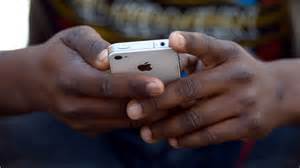
Photo from www.empowermagazine.com
Three years ago, one of my patients asked, “Doc, why can’t we talk on the computer?”
The question caught me off guard. In 17 years as a doctor for low-income Medicaid and uninsured people, it was the first time a patient expressed interest in swapping in-person visits with technology. He had moved 40 miles away from the clinic but didn’t want to change providers.
When I told him a FaceTime or Skype visit was not feasible, he then asked if we could talk on the phone or text because he wasn’t working, and this would allow him to spend less on gas. Although intrigued, my inability to meet his needs made me feel inadequate. I wondered how many other people like him wished the same but had never mentioned it.
After that visit, both in the office and on the street I found nearly unanimous agreement about people’s desire to communicate with health care providers using cell phones and the Internet. The few who preferred clinic-based visits, perhaps coincidentally, were either elderly or lived alone and felt socially isolated.
I shared this experience with a few health policy and opinion leaders. Could we transition to health IT solutions for follow up visits and perhaps even to keep people out of the ER? The consensus response was, “Do the poor have access to technology and the internet?”
These responses are not dissimilar from those I received in 2005 when I proposed conducting a computer-based research study for the CDC among prisoners. Seasoned researchers were skeptical and asked, “Are prisoners able to use computers?” “Aren’t you worried about literacy?” The computerized survey was welcomed by the participants and we encountered few, if any challenges with literacy. The skepticism, even now, represents a persistent knowledge gap between decision makers — funders, scientists, researchers, policymakers — and the community.
Research data show nearly 80 percent of persons from low income households use cell phones to text and this number increases annually. The data are also consistent with my experience. Nearly all of my patients have phones and in recent years we have used this strategy to locate and stay connected with many of them.
Whether on the bus, subway, grocery store line or walking down the street, it seems everyone is texting, staring at or talking into a device, even in our poorest neighborhoods. Yet, IT-based health care strategies are exploding everywhere except in low-income communities where, ironically, much of our highest cost health care is centralized. When will we make it a priority? I am convinced the community is ready — even if we aren’t.
Previously published on Medium by Dr. Fitzpatrick